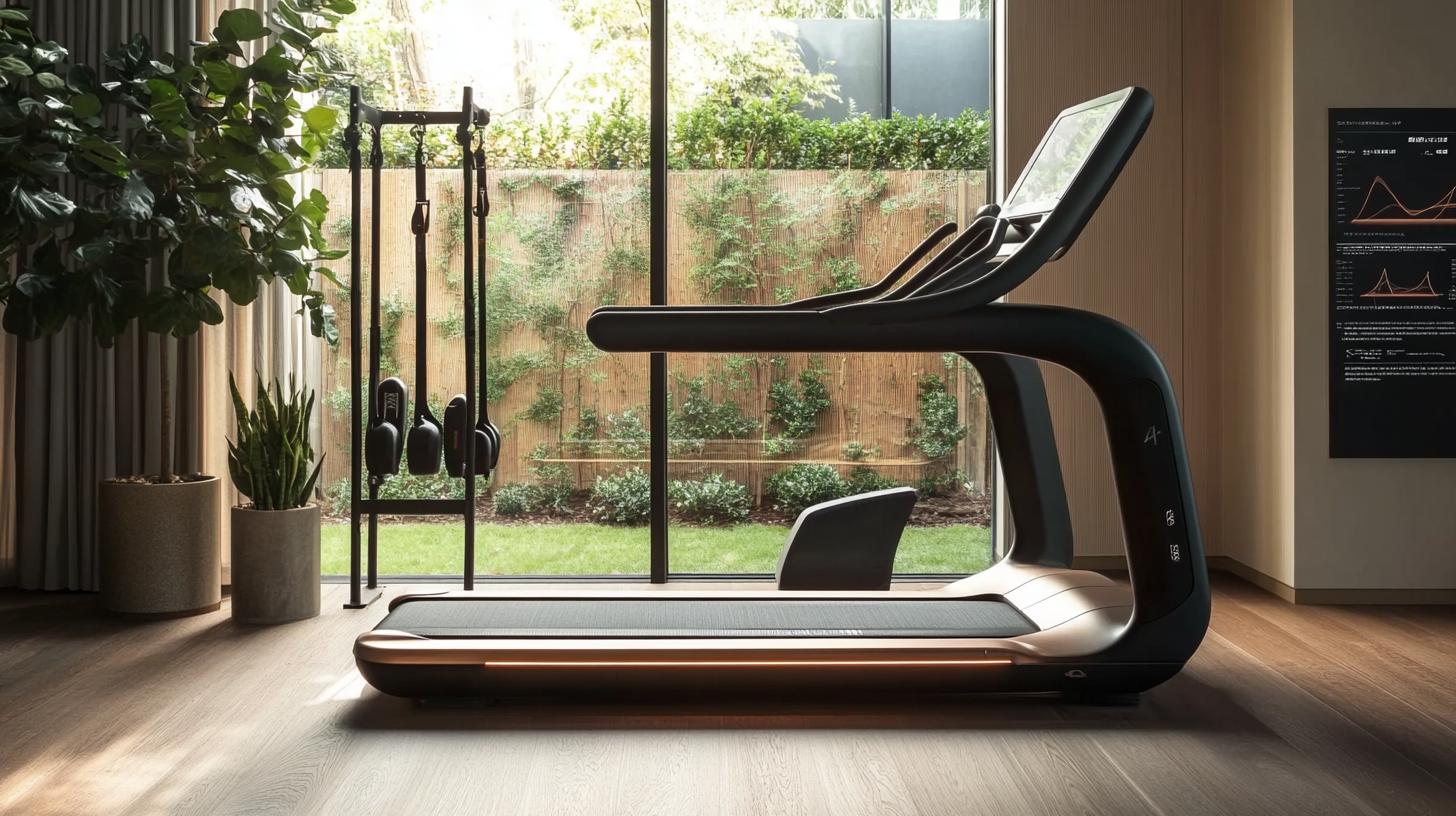Future of Workout Equipment Innovations for 2025 and Beyond Guide
As we move towards 2025, the fitness industry is poised for a transformative shift driven by innovative workout equipment that enhances user experience and efficacy. According to a recent report by Allied Market Research, the global market for fitness equipment is expected to reach $14.4 billion by 2025, growing at a compound annual growth rate (CAGR) of 3.7%. This growth is fueled by an increasing emphasis on health and wellness, as well as the rise of digital fitness solutions that integrate seamlessly with traditional workout equipment. The demand for smarter, connected devices that can track performance and provide real-time feedback is changing how we approach fitness.
In addition to smart technology, sustainability is becoming a focal point in the development of workout equipment. The American Council on Exercise (ACE) emphasizes that consumers are increasingly prioritizing eco-friendly products, pushing manufacturers to innovate with sustainable materials and practices. As a result, the workout equipment of the future will not only be designed for optimal performance but will also reflect a commitment to environmental responsibility. This blog will explore the expected innovations in workout equipment and how they will shape the future of fitness for both enthusiasts and casual users alike.

Emerging Technologies Shaping Workout Equipment in 2025
As we look ahead to 2025 and beyond, the landscape of workout equipment is set to undergo significant transformation driven by emerging technologies. With the integration of the Internet of Things (IoT), smart gym equipment is paving the way for a more connected and efficient fitness experience. According to a recent industry report, the global smart fitness market is projected to reach $24 billion by 2025, highlighting the growing demand for equipment that not only tracks performance but also enhances user engagement through connectivity. Innovations such as AI-driven virtual coaching and augmented reality workouts are expected to redefine personal training. For instance, smart mirrors and bikes equipped with advanced sensors can provide real-time feedback, allowing users to adjust their form and technique during workouts. These enhancements not only improve efficiency but also reduce the risk of injury, which is crucial as home workouts continue to rise in popularity. In fact, a survey indicated that over 60% of fitness enthusiasts express interest in integrating smart technology into their at-home fitness routines. Moreover, the focus on data privacy and cybersecurity will shape the development of these devices. With more equipment coming online, ensuring data security becomes paramount, especially as fitness apps and devices collect sensitive user information. As highlighted in recent cybersecurity trends, breaches and data security threats remain a critical concern, emphasizing the need for robust protections in the design of future fitness technologies. Companies that prioritize both innovation and security will likely lead the industry as consumers become more discerning about their personal data.

Smart Fitness Devices: Merging AI with Personal Training
In the evolving landscape of fitness, the integration of artificial intelligence (AI) with personal training is set to revolutionize the way we approach our workouts. As we look towards 2025 and beyond, smart fitness devices are becoming increasingly sophisticated, offering users tailored experiences that adapt to their unique fitness goals and progress. These devices utilize machine learning algorithms to analyze data from previous workouts, allowing them to provide real-time feedback and suggestions that enhance performance and motivation.
Personalized training plans powered by AI can assess an individual's strength, endurance, and skill levels, creating bespoke workout regimens that evolve as the user progresses. Imagine a smart weight machine that recognizes your lifting patterns and adjusts resistance automatically, or a virtual coach that monitors your form through advanced sensors and suggests corrections on-the-fly. The era of one-size-fits-all training is fading, giving way to customizable experiences that can make fitness both more effective and enjoyable.
Moreover, the social aspect of fitness is being transformed through these innovations. Many smart devices not only track individual performance but also foster a sense of community. Through connected apps, users can share achievements, compete with friends, and join virtual group classes led by AI-enhanced trainers. This connectivity not only motivates users but also creates a supportive network that encourages accountability and consistency, essential elements of successful fitness journeys in the modern age.

Sustainable Materials: The Future of Eco-Friendly Gym Gear
As we look towards the future of workout equipment innovations for 2025 and beyond, the emphasis on sustainable materials is becoming increasingly critical. The fitness industry is witnessing a significant shift, paving the way for eco-friendly gym gear that not only enhances performance but also minimizes environmental impact. This transformation is driven by a collective commitment to sustainability, reflecting a broader movement that has transcended mere trendiness to become an integral part of consumer lifestyle choices.
In tandem with the growing popularity of sustainable fashion, workout equipment manufacturers are beginning to adopt practices that prioritize the use of ethically sourced and recycled materials. This approach not only addresses the pressing concern of plastic waste but also aligns with the values of health-conscious consumers who are seeking products that contribute positively to the planet. Brands are now exploring circular textiles and innovative recycling methods, ensuring that their offerings are both high-performing and environmentally responsible.
The emergence of sustainable workout clothes and activewear brands is a testament to this ongoing evolution. These companies focus on creating apparel from recycled fibers and other eco-friendly materials, helping to reshape the athleisure market towards a more sustainable future. As the fitness community embraces these eco-conscious practices, we can expect to see a flourishing demand for workout equipment that embodies these values, ensuring that the gym gear of tomorrow is both innovative and sustainable.

Connected Fitness: The Role of IoT in Home Workouts
The emergence of the Internet of Things (IoT) has revolutionized the landscape of home workouts, setting the stage for a dynamic future where fitness enthusiasts can seamlessly integrate technology into their exercise routines. Connected fitness equipment is at the forefront of this transformation, allowing individuals to track their progress in real-time, access personalized workout plans, and engage with trainers from the comfort of their homes. This shift not only enhances user experience but also fosters a sense of community among fitness enthusiasts, who can participate in virtual classes and share achievements with others.
As we look toward 2025 and beyond, we anticipate the rising importance of smart workout devices that offer adaptive feedback during workouts. For example, smart weights could automatically adjust resistance levels based on the user’s performance, ensuring that every training session is tailored to individual needs. Additionally, wearables equipped with advanced sensors will provide insights into heart rate, calorie burn, and recovery times, empowering users to make informed decisions about their fitness journeys.
Moreover, the integration of AI within connected fitness ecosystems is poised to introduce even more personalized experiences. Virtual trainers powered by artificial intelligence could analyze user data and suggest specific exercises or modifications in real-time, enabling workouts to become more efficient and effective. As homes evolve into high-tech workout studios, the convergence of IoT and fitness will not only motivate individuals to stay active but also redefine how we perceive and approach wellness in our daily lives.
Personalization in Fitness: Custom Equipment for Unique Goals
As we look ahead to 2025 and beyond, personalization in fitness equipment is becoming increasingly pivotal. With companies like Technogym leading the way, the future of workout gear is tailored to meet individual performance metrics and health goals. Gone are the days of one-size-fits-all solutions; today's innovations focus on customizable features that cater to the unique needs of each user.
Technogym has introduced a range of smart equipment that utilizes advanced technology to adapt workouts based on a person's fitness level, preferences, and progress. These innovations allow for an immersive experience, where users can receive instant feedback and adjust their routines accordingly. This not only enhances the effectiveness of workouts but also keeps motivation levels high by making fitness both fun and rewarding.
Furthermore, the incorporation of data analytics in personalized fitness represents a major shift in how individuals will approach their health. Wearable technologies that sync with smart equipment facilitate a comprehensive understanding of personal performance. When paired with customizable machines, users can set achievable goals while seamlessly tracking their advancements. As we move forward, embracing such personalized innovation will be key to fostering long-term engagement and success in fitness journeys.

